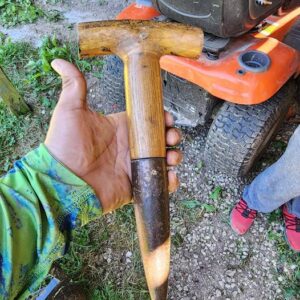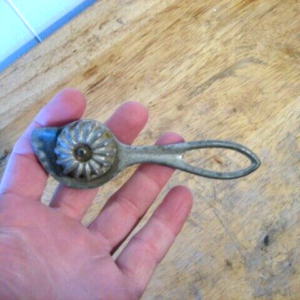Vintage crimping tongs, iconic tools from the early days of hairstyling, hold a special place in beauty history. These elegant appliances reflect the evolution of personal grooming and the timeless desire for stylish, textured hair.
A Glimpse into History
The history of crimping tongs dates back to the late 19th and early 20th centuries. As fashion trends evolved, so did the tools used to achieve them. Early crimping tongs were often made of cast iron and heated on stoves or open flames. These tools were crafted to create the distinctive wave patterns that defined the hairstyles of the era.
One of the most notable figures in the history of crimping tongs is Marcel Grateau, a French hairdresser who invented the Marcel wave. His innovation in the 1870s popularized the use of heated tongs to create soft, natural-looking waves, laying the foundation for future hairstyling tools. By the early 20th century, electric crimping tongs emerged, making the process safer and more convenient.
Usage and Practicality
Vintage crimping tongs were primarily used to create intricate wave and crimp patterns in hair. The process involved heating the tongs and carefully clamping sections of hair between the hot plates. This technique allowed for a variety of styles, from tight, defined crimps to loose, flowing waves.
These tools required skill and patience. Unlike modern electric crimpers with adjustable heat settings and ergonomic designs, vintage tongs demanded precision to avoid burning the hair or scalp. Despite these challenges, the results were stunning, adding texture and volume to hairstyles that defined the fashion of the day.
Crimping tongs were not only popular among everyday users but also among professional hairstylists. They played a crucial role in the glamorous looks of Hollywood’s golden age, with stars like Clara Bow and Jean Harlow showcasing beautifully crimped hair on the silver screen.
The Legacy of Vintage Crimping Tongs
The legacy of vintage crimping tongs is rich and multifaceted. Firstly, they represent a significant period in the history of hairstyling, marking a time when beauty tools were handcrafted with precision and designed to create lasting impressions. Collectors and enthusiasts appreciate vintage crimping tongs for their historical value and aesthetic appeal.
These tools have also influenced modern hairstyling appliances. Contemporary crimpers and wavers often draw inspiration from their vintage counterparts, combining nostalgic design elements with modern technology to offer safer, more efficient styling options.
Moreover, the cultural impact of vintage crimping tongs is evident in the recurring trends in fashion and beauty. The iconic crimped hairstyles of the past continue to inspire current styles, with designers and hairstylists revisiting and reinventing these classic looks for modern audiences. The resurgence of retro and vintage fashion has further cemented the enduring appeal of crimped hair.
Conclusion
Vintage crimping tongs hold a special place in the annals of beauty history. From their inception in the late 19th century to their influence on modern hairstyling tools, they reflect the evolution of fashion and personal grooming. Their durability, practicality, and timeless charm continue to captivate collectors, hairstylists, and beauty enthusiasts alike. As functional tools and historical artifacts, vintage crimping tongs remind us of the artistry and innovation that have shaped the world of hairstyling, leaving a lasting legacy that transcends generations.



